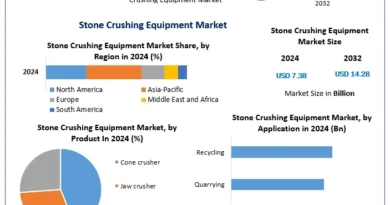Alternative Credit Risk Assessment: Transforming Lending with Data-Driven Insights
Introduction
Traditional credit risk assessment has long relied on financial history, credit scores, and income verification to determine an individual or business’s creditworthiness. However, these methods often fail to accommodate individuals with limited or no credit history. As a result, financial institutions and fintech companies are turning to Alternative Credit Risk Assessment to bridge this gap. By leveraging unconventional data sources and advanced analytics, this approach is reshaping the lending landscape.
Understanding Alternative Credit Risk Assessment
Alternative Credit Risk Assessment refers to the process of evaluating creditworthiness using non-traditional data sources, such as utility payments, rent history, online transaction behavior, and even social media activity. Unlike conventional credit scoring models, this method provides a more comprehensive view of an applicant’s financial habits, making credit accessible to a broader demographic.
The Need for Alternative Credit Risk Assessment
Millions of individuals worldwide remain unbanked or underbanked due to a lack of formal credit history. Traditional credit scoring methods exclude:
- Young adults with limited borrowing history
- Self-employed individuals with fluctuating income
- Immigrants without a credit footprint in their new country
- People recovering from financial hardships
By incorporating alternative data, lenders can make more informed decisions, reduce default risks, and expand their customer base.
Key Data Sources in Alternative Credit Risk Assessment
- Utility and Rent Payments
Regular payments for electricity, water, and rent demonstrate financial discipline and responsibility. - Banking and Transaction Data
Analyzing bank statements, spending habits, and savings patterns provides insights into an individual’s financial health. - Employment and Income Data
Gig economy earnings, freelance payments, and salary deposits help gauge income stability. - Telecom and Subscription Payments
Payment history for mobile phones, internet services, and streaming platforms indicates consistent financial behavior. - E-commerce and Digital Transactions
Online shopping behavior, payment punctuality, and purchase trends can reflect spending discipline. - Social Media and Online Presence
Some lenders analyze social media activity, professional networks, and digital engagement to assess trustworthiness.
Benefits of Alternative Credit Risk Assessment
1. Improved Financial Inclusion
Alternative credit risk models enable access to credit for individuals traditionally overlooked by standard credit bureaus. This fosters financial inclusion and economic growth.
2. More Accurate Risk Prediction
By using diverse data points, lenders gain a clearer picture of an applicant’s creditworthiness, reducing reliance on outdated scoring models.
3. Enhanced Fraud Detection
Real-time transaction data and behavioral analytics help identify fraudulent activities, mitigating risks for financial institutions.
4. Faster Credit Decisions
Automated data analysis accelerates loan approvals, enhancing the borrower experience and streamlining lending processes.
5. Competitive Advantage for Lenders
Financial institutions adopting Alternative Credit Risk Assessment can tap into new markets, attract diverse borrowers, and differentiate themselves in the industry.
Challenges and Concerns in Alternative Credit Risk Assessment
1. Data Privacy and Security
With increased reliance on personal data, ensuring compliance with data protection regulations is crucial.
2. Standardization Issues
Unlike traditional credit scores, alternative data sources vary widely, making standardization a challenge.
3. Algorithm Bias
AI-driven models must be carefully designed to prevent discriminatory lending practices.
4. Regulatory Compliance
Financial regulators are still adapting to the inclusion of alternative data, requiring lenders to stay updated on compliance requirements.
The Future of Alternative Credit Risk Assessment
As technology evolves, Alternative Credit Risk Assessment will become more sophisticated. AI, machine learning, and big data analytics will refine credit models, offering even greater accuracy and inclusivity.
Lenders that embrace this innovative approach will benefit from improved risk management, better customer insights, and a more inclusive financial ecosystem.
Conclusion
Alternative Credit Risk Assessment is revolutionizing the lending industry by incorporating diverse data points to evaluate creditworthiness. It enhances financial inclusion, enables faster lending decisions, and provides lenders with a competitive edge. However, addressing privacy concerns and regulatory compliance will be key to its widespread adoption. As financial institutions continue to innovate, alternative credit assessment methods will play a pivotal role in shaping the future of global lending.




